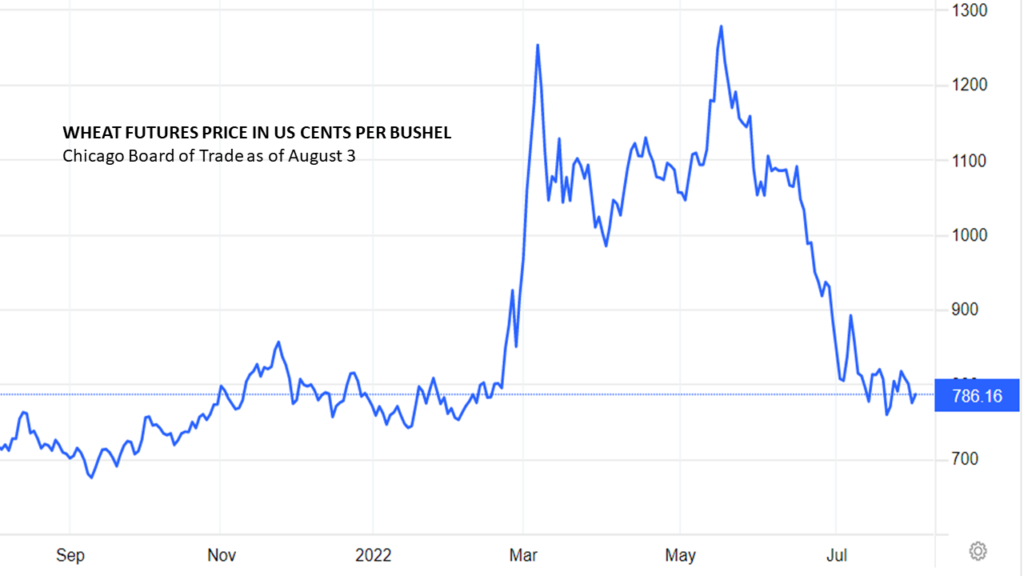[Update Below] Upstream food capacity is variable by place, precipitation, and season. Midstream flows are vulnerable to a wide range of disruptions. Downstream demand is profound — and sometimes desperate, especially in the face of price increases.
Grain exports from the Northern Black Sea through the Dardanelles were fundamental to food flows (and prices) for the Athens of Socrates, Plato, and Aristotle. Russian (including Ukrainian) grain exports — and related imports — were a significant backstory for the Crimean War (1853-1856). Since 2010 Ukraine’s wheat exports have quadrupled. Russia exports even more wheat than Ukraine. The largest proportion of both Russian and Ukrainian agricultural exports depend on maritime channels through the Black Sea (more).
Less than a dozen ports along the Black Sea handle large volume food flows at comparatively high velocity. But for the last five months the Black Sea has been transformed from an effective bottleneck into a troublesome chokepoint.
According to FarmdocDaily from the University of Illinois:
Last year, Russia and Ukraine accounted for almost 30% of the global trade in wheat. Because of the war, Ukraine’s wheat production for the marketing year 2022/23 is projected to be 19.5 million metric tons, down 13.5 million tons (-41%) from last year. The USDA includes estimated output from Crimea. Harvest began at the end of June and will continue until mid-August. Russian wheat production is expected to be 81.5 million tons, up 6.3 million tons (8%) from last year… Total harvested area is projected to be 27.8 million hectares, up 1% from last year.
Russian grain exports have not been physically blocked, but flows have been disrupted by spillover effects of a wide range of economic sanctions (more).
The predictable outcome of upstream reductions (and worry) and midstream complications (and more worry) has been downstream price increases (see chart below). But even before Monday’s departure of a grain shipment from Odesa, the March to May price spike had fallen almost as fast as it had risen. Worry has been assuaged by a bumper US wheat harvest and close-to-normal harvests for Canada (more and more). Despite drought in France, German wheat harvests are expected to rise slightly. It’s too early to predict Argentina, but conditions don’t look as dire as a few weeks ago. Consumers and markets have demonstrated a readiness to embrace wheat alternatives. Food price increases have also been moderated by falling fuel prices.
Russia’s invasion of Ukraine plus related sanctions have created real constraints and cause for worry. The increasing strength of the dollar — and dollar-denominated commodity contracts — increase global food costs. Many have gone hungry and some have died as a result of disrupted flows and increased prices. But so far production capacity has been diverse enough to fill most gaps. Distribution capacity is delivering where demand can be expressed with effectual pull (in other words, dollars or other recognized transactional value). The most treacherous problem is where demand is real, but non-effectual.

August 5 Update: “The FAO Food Price Index* (FFPI) averaged 140.9 points in July 2022, down 13.3 points (8.6 percent) from June, marking the fourth consecutive monthly decline. Nevertheless, it remained 16.4 points (13.1 percent) above its value in the corresponding month last year. The July decline was the steepest monthly fall in the value of the index since October 2008, led by significant drops in vegetable oil and cereal indices, while those of sugar, dairy and meat also fell but to a lesser extent.”